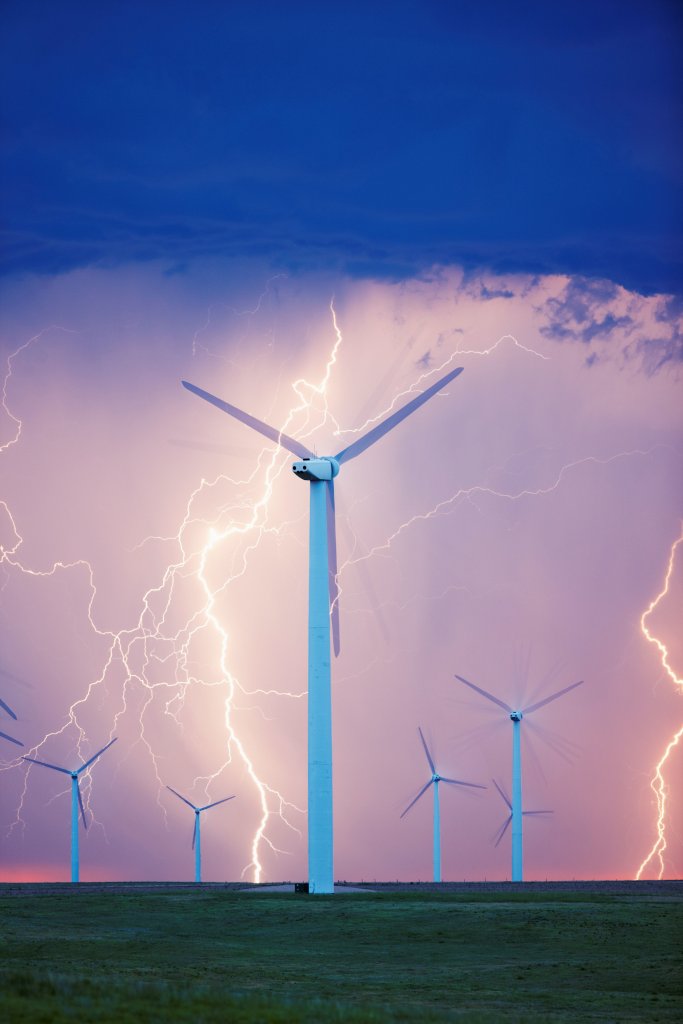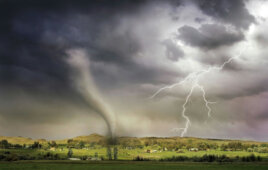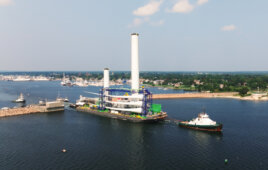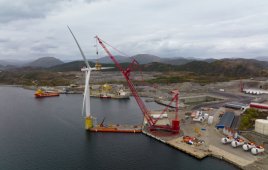By M. Malkin and A. Byrne, DNV GL
Lightning damage is a concern for operational wind projects around the world. Disputes between wind turbine owners and manufacturers regarding lightning damage to wind turbines, most commonly to blades, are at the intersection of technical and commercial spaces. Further, the interaction between lightning and wind turbines carries considerable uncertainty, in that the intensity of lightning is difficult to know with confidence and the damage it causes is unpredictable.
 Commercial contracts, such as turbine supply agreements and service and maintenance agreements, typically treat lightning as a force majeure event, and responsibility for repairs (or replacements) and associated costs, such as lost production due to lightning damage, are not typically covered by warranty provisions. As a result, when lightning damage occurs, turbine owners are often in the position of paying the costs related to the damage. Insurance may provide coverage, depending on the specifics of the insurance policy. Insurance policy language and premiums may reflect perceived risk levels.
Commercial contracts, such as turbine supply agreements and service and maintenance agreements, typically treat lightning as a force majeure event, and responsibility for repairs (or replacements) and associated costs, such as lost production due to lightning damage, are not typically covered by warranty provisions. As a result, when lightning damage occurs, turbine owners are often in the position of paying the costs related to the damage. Insurance may provide coverage, depending on the specifics of the insurance policy. Insurance policy language and premiums may reflect perceived risk levels.
Lightning protection systems (LPS) are designed to minimize the risk of lightning damage. Some damage is expected from extreme strikes; however, damage that impairs the function of the turbine is expected to be limited to extreme lightning events — lightning events that exceed the design capabilities of the LPS. As a parallel, extreme weather events (e.g., tornadoes) may be expected to exceed design conditions for wind turbines and cause damage. Contracts will define in each of these scenarios what constitutes a force majeure event.

A severe thunderstorm unleashes lightning behind a wind turbine at a wind farm in Colorado. Courtesy: Vaisala
There are good reasons to change the current practice of considering lightning as a force majeure event. Modern wind turbine LPS design is intended to safely intercept most strikes and conduct the lightning energy safely to ground. LPS are designed and tested to standards such as IEC 61400-24. This design and test effort suggests that lightning, similar to excessive wind speed or wind turbulence, is an environmental effect against which we can engineer effective protection. Given that the LPS has design requirements, it seems unreasonable to treat all lightning as force majeure.
If not all lightning is considered force majeure, then contracts should identify an effective means for assigning responsibility when lightning damage occurs. Factors to consider when drafting contract language include:
- Lightning damage not being a force majeure event by default.
- Clear definition of “function-impairing damage.”
- Consideration of uncertainties in the assessment of LPS performance, with possible adjustments of assigned responsibility between the turbine manufacturer and owner based on those uncertainties.
- A path for dispute resolution, such as consultation with an independent third party.
Turbine-mounted lightning measurement devices, with appropriate verification of function and calibration, provide an opportunity for reducing the uncertainty associated with assessing the intensity of damaging lightning strikes. In the event that function-impairing damage occurs, then the results from the measurements could be compared to the design capability of the LPS, informing assignment of responsibility for remediation.
Removing lightning from force majeure clauses has the potential to drive improvements in LPS technology. As turbine tip heights increase, the effects of interaction between lightning and wind turbines are likely to become more uncertain. Installations of turbines continue, and unless current contractual practices change, lightning damage will continue to be a contentious and challenging problem for wind turbine owners and operators.
The authors have provided consulting services regarding the interaction between lightning and wind turbines for more than 10 years.
Filed Under: Featured




